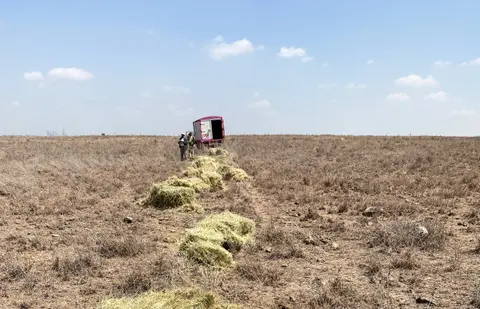The drought over the last few months has caused immeasurable suffering to the wildlife not only in the national park, but also other parts of the country. From the Emakoko, it has been painful to watch the lush greenness of the land slowly turn into a desolate wilderness, with animals too weak to walk from water to the remaining grazing. Watching the decimation of the herds has been very hard and we have felt an enormous urge to do what we could. With the park being surrounded by humanity, the ancient migration routes have now been eradicated and thus the animals are seemingly trapped in the park all year round.
Only decades ago, animals were free to move around from dry areas to wet in order to survive. Population increases all over the world have curtailed these migration routes, and the results, not just in Kenya, have been catastrophic. We at the Emakoko have sat and watched, day after day, animals slowly succumb to the lack of sustenance. Buffalo, it appears, are always the first to go and it seems that our population was no exception. From the beginning of this year, a small herd gathered outside the lodge where the last remaining fresh water was, and ate what ever they could from the lodge grounds.
It became a regular occurrence that we or our team would bump into buffalo, who climbed our steep hill in search of greener pastures, only to be met with more dusty, grassless wilderness. Eventually, we made the decision that we had to save whatever we could, and embarked on buying hay and molasses and, with the support of the Kenya Wildlife Services, distributing it within the park area. Our little group of buffalo slowly grew and we went from having only 2 or 3, to 12, to 36 plus. We also had a Hippo who used what pooled water was left to wallow in during the heat of the day, but even the Mbagathi River had dried to a trickle.
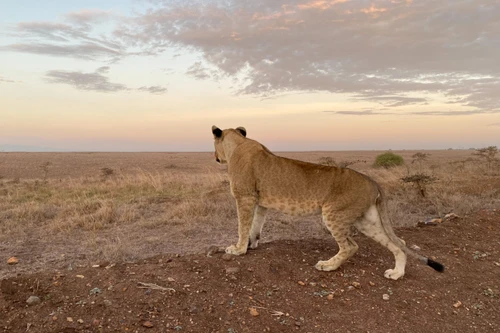
By February our lodge income was decreasing rapidly as we prepared for the low season, and cash being spent on food for these animals was beginning to hit our finances, I decided to reach out to my mother (author of the book Yesterday, Today and Tomorrow – Jacqueline Hunt) to see if she could have a ‘whip round’ with bridge and golf friends and raise a little cash to assist us to bring in a lorry-load of hay.
I had no idea the power she had (and apparently neither did she!) and within 24 hours she had raised just over $5,000 to buy much needed hay. This continued at an incredible rate and before the end of the week we have over USD$10,000 to be allocated to park wildlife, and the extraordinary thing was that the largest donation she received was $200, and the smallest $10. Over 250 people from every walk of life did what they could to help. It was an incredible effort and it meant that we could now stretch far from The Emakoko surrounds and assist neighbouring farming community who were losing their livestock. With only weeks to go before the rain we needed to try and ‘fatten up’ what had so far survived. After prolonged drought it is not uncommon to have a huge number of deaths after the first rain as the animals, particularly the young and the elderly, struggle to keep warm in the sudden drop in temperature, and also with new nutrient grass, their systems seem unable to cope.
It was wonderful to see all the animals munching away on cut Lucerne grass brought down from outlying areas where the drought had not been as severe. On one school run I came across a White Rhino sitting right in the middle of one pile of hay and slowly eating his way around his bod; on my way back he was still sitting there but had now turned around to eat the hay on the other side.
From a predation point of view, the lions have had a field day. Worryingly, there are young lions who were raised in the drought and therefore do not fully understand the power of a buffalo……with the debilitation caused to game by the lack of food and water, a single lion could take down a buffalo on his own. It was so easy to kill that many carcasses were left untouched by the lions themselves, and became the property of jackals, hyena and vultures. What a shock they will get now that our Buffalo herds are back to full strength – I would hate to see that go wrong for a young lion!
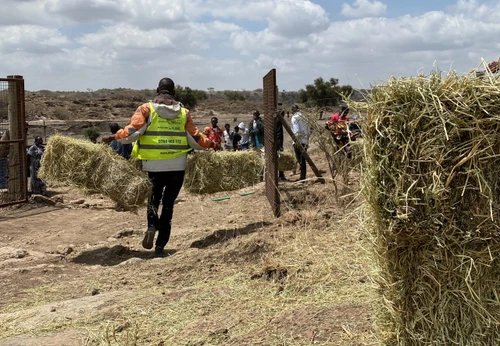
Now the rains have come and the park has been transformed, the extent of our losses became clearer. Many were saved, but obviously we were unable to save everything, and so a few weeks after the first rain the landscape appeared to be littered with the uneaten carcasses and skeletons of the casualties. This has now changed and it is wonderful to see everything as it should be – the park looks stunning and all the animals look well fed. So many beautiful flowers everywhere, it is incredible to see such a complete transformation. Visitors arriving into Kenya now would be hard pushed to imagine what this all looked like in March.
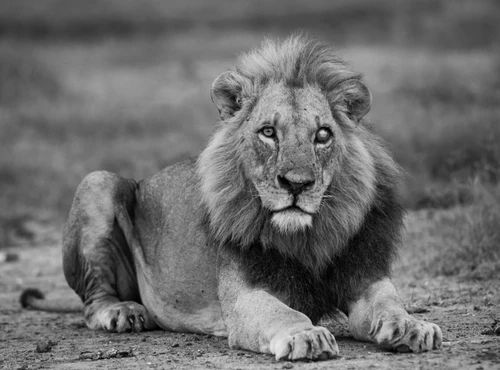
On a sad note, our beautiful Black Rhino, that so many of our guests have had the pleasure of seeing from their room balconies, has died. In the middle of April, a territorial dispute between him and a new young Black Rhino ended up with him sustaining catastrophic internal wounds. We were awoken at approximately 3am to the crashing of bushes and the most extraordinary Rhino sound ( I had only ever heard this when I worked for Dame Daphne Sheldrick and it was how the baby Rhino’s communicated when they were getting their milk). We alerted the Rhino unit who came in and stayed nearby hoping that he would just need time to recover, but at the grand old age of 33 his healing would not be quick! He stayed around room 4/5 where he felt safe (wonderful for our guests to have him right under the balcony on some nights). At the end of the month he hobbled down towards the river, lay down under a beautiful Markamia bush and took his last breath in peace. We were extraordinarily fortunate to have such a magnificent creature in our ‘back yard’ and to know that he has had a peaceful and normal life here in Nairobi National Park.
Added to this, we lost our beautiful ‘KING’ Kitili – the one-eyed King of Nairobi National Park, who was taken out by two younger male lions. Since we have been at The Emakoko we saw him as a young cub causing havoc with his mother – to growing into a disagreeable teen, and then a King of his kingdom.
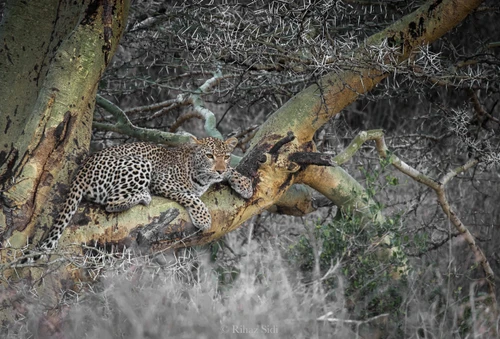
Finally on a happier note and keeping in mind the circle of life, we are delighted to see KOKO with her new cubs, our beautiful leopardess who has been around the lodge since she was a cub herself. She is regularly seen up in the forest and not at all bothered by vehicles. It is also great to see so many new lion cubs in different parts of the park, and we take comfort in the fact that some of these little cubs were no doubt fathered by Kitili, and they will have met their father no doubt before his demise in March. My mother’s book is a romantic novel written to amuse us all during Covid, and based loosely on the lodge, a light- hearted holiday read. You can buy it on Amazon books, either as an E-book or in hard copy – YESTERDAY TODAY and TOMORROW





